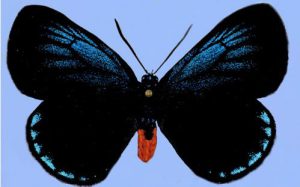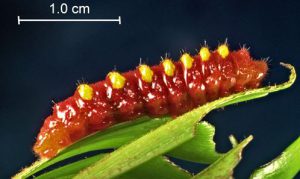Welcome back to our monthly blog in which we discuss a few interesting facts about butterflies in general and a specific type of butterfly.
Of the six known butterfly families, this month we will address the gossamer winged, also known as hairstreaks and blues and the metalmarks. Gossamer winged butterflies are so called because of the delicate nature of their wing structure which makes some, especially the tropical cousins, look translucent. Within that family, the hairstreaks are so called because the underside of their wings appears to have a hairy structure. They come in a wide variety of patterns and colors with many having smalls tails on the backs of their wings that look like another set of antennae.
Blues are, as expected, named for their variety of blue shades that is interestingly caused by light reflection on their wing scales, not by pigment.
Metalmarks, also in the gossamer winged family, are so named because they have a metallic appearance. There are 1500 species, mostly in tropical areas.
The Atala
The atala is a relatively small butterfly, as hairstreaks usually are, 1.5-2” wide. North Florida is the northern most edge of their range. Compared to other butterflies they fly very slowly. They are mostly found in coastal pinelands and hardwood habitats.
Atalas are black with a distinctive red abdomen and bright blue iridescent spots on the underside of the hindwings. Males have iridescent green markings on the topside of their wings, those of females are blue. Small white eggs laid in clusters turn into bright red larva with two rows of yellow spots down the back.

They lay their eggs exclusively on coonties and other cycads, which almost caused their extinction as coonties were extensively harvested for arrowroot starch production in the first half of the last century. By 1965 there was only one colony known to exist and it is due to the work of dedicated conservationists that they have made a gradual but spectacular recovery.

Please join us again next month when we will discuss the brushfooted and skipper families and Buckeyes in particular.
For additional information please visit https://gardeningsolutions.ifas.ufl.edu/design/types-of-gardens/butterflygardens.html
Written by Carin Ashman, UF/IFAS Extension Clay County Master Gardener Volunteer
Source: UF/IFAS Pest Alert



